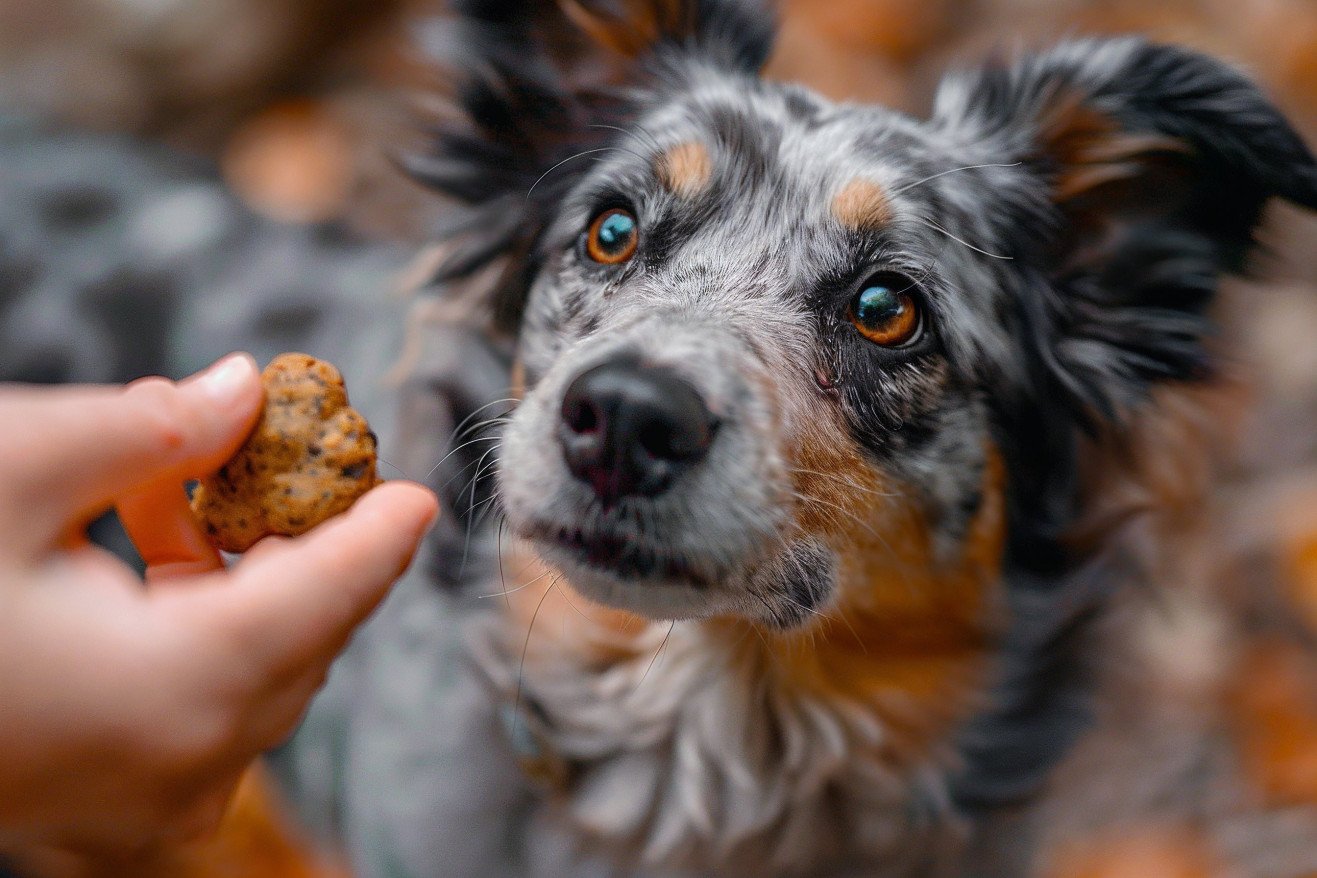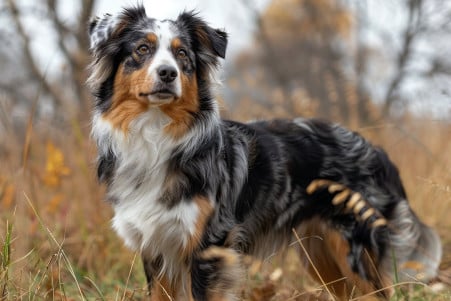At What Age Do Blue Heelers Calm Down? Understanding Their Energy Levels
13 April 2024 • Updated 11 April 2024

If you're thinking about getting a Blue Heeler as a pet, you may be wondering when these active herding dogs will finally calm down and become a bit more manageable. Blue Heelers, or Australian Cattle Dogs, are known for their high energy and it's not uncommon for them to reach a point of calmness until they're between 2 and 3 years old. However, with the right amount of exercise, training and mental stimulation during puppyhood, Blue Heelers can be taught to direct their energy in positive ways as they grow into their adult years.
To learn more about when Blue Heelers calm down and what the process looks like, we've cited experts in the fields of veterinary medicine, animal behavior and dog breeding and training. We've also referenced dog owners and breeders who have raised Blue Heeler puppies and seen them through their adolescent and adult years to get a better idea of when these dogs find their "off" switch. By the time you're done reading, you'll have a good idea of what to expect as your Heeler puppy grows up.
At What Age Do Blue Heelers Calm Down?
Blue Heelers and Family Life
Blue Heelers are known for their loyalty to their families, says Greencross Vets. However, their protective instincts and tendency to try to herd kids by nipping at their heels can make them difficult family pets if they haven't been trained and socialized properly from a young age. Although their friendly nature means they will generally be good family pets, The Spruce Pets says that professional training is a good idea to make sure the dog understands its limits.
For families with children under the age of 10, Blue Heelers may not be the best choice, says Moms Who Think. This is because they can be triggered by sudden movements and loud noises, and children under 10 are often unable to understand a dog's body language, which can lead to nipping. Blue Heelers are better suited to families with older children who are calmer and can understand a dog's cues. However, even with older children, it's important to supervise the dog when it's around new people and pets because of its wariness of strangers.
With the right socialization, training, and exercise, Blue Heelers can be great family pets that are very loyal to their owners. However, their needs mean they may not be the best choice for a first dog for someone who is new to dog ownership. It's important to carefully consider whether a Blue Heeler will be a good fit for your family before bringing home a dog from this intelligent and high-energy breed.
Physical and Mental Activity for Blue Heelers
Blue Heelers are an extremely active breed that needs at least 2 hours of exercise every day, according to BorrowMyDoggy. To make sure their exercise requirements are met, a combination of activities such as hiking, swimming, agility, and fetch is recommended. Wag! also points out that mental stimulation is just as important as physical activity, and suggests puzzle toys, obedience training, and giving them 'jobs' to do.
If their exercise and mental needs aren't met, Blue Heelers can become destructive by barking and chewing, according to A FEW OF MY FAVORITE THINGS. To make sure they don't get bored, owners can keep them busy with dog sports, herding, and a variety of toys. Since Blue Heelers are so active and love to work, it's important to make sure they have plenty of physical and mental activities to keep them happy and healthy.
How to Train and Socialize a Blue Heeler Puppy
Early training and socialization are especially important for helping you manage a Blue Heeler's high energy and strong herding instincts, according to PetHelpful. Because they are so smart, you can use positive reinforcement to train them and help them learn not to nip. Dogtime says that crate training, consistent training, and a strong, confident pack leader are also important for setting them up for success.
Exposing Blue Heeler puppies to new people, places, and things in a controlled way is a key part of socialization and will help them become more confident, according to YourPurebredPuppy. This is important because the breed is prone to becoming wary of strangers if they aren't trained otherwise. It's also important for owners to be patient and willing to continue training their Blue Heeler throughout their life to make sure their energy is channeled in a positive way.
If you do this, you can help your Blue Heeler become a loyal, well-behaved pet. However, because of their demanding nature, it's important that anyone considering adopting a Blue Heeler is willing to put in the time, energy, and effort to meet their needs.
Important Health Issues and Conditions
Australian Cattle Dogs are a generally healthy breed, but they are susceptible to some health issues that potential owners should know about. Pet Insurance Review explains that these include hip and elbow dysplasia, eye issues such as progressive retinal atrophy (PRA), and deafness. They can also suffer from allergies, skin problems, and blood clotting disorders like Von Willebrand's disease.
Responsible breeders will work to eliminate these issues from the breed, as WebMD points out. When properly cared for, Australian Cattle Dogs can live 12-15 years, and some have even lived to be 18 years old, according to the Guinness Book of World Records. By learning about these potential health problems and taking steps to prevent them, Australian Cattle Dog owners can make sure their pets live long, happy lives.
Grooming and Shedding: What to Expect
Blue Heelers have a short, double coat that is relatively low-maintenance, according to Dogster. Weekly brushing with a slicker brush or undercoat rake will help keep their moderate shedding under control. Espree explains that their short, smooth coat means they only need to be bathed occasionally.
These dogs will blow their undercoat twice a year, so you'll need to brush them more often during these times of the year, as mentioned by Cuteness. They only need to be bathed when they get dirty, and other grooming requirements include regular nail trims, ear cleaning, and teeth brushing.
Thanks to their double coat, which is made to be water- and dirt-repellent, Blue Heelers are a breed that's relatively easy to maintain when it comes to grooming. Regular brushing and occasional baths are typically all you'll need to do to keep their coat in good shape and keep shedding to a minimum.
Conclusion: Do You Want a Blue Heeler?
Blue Heelers, or Australian Cattle Dogs, are intelligent, active dogs that need an experienced, active owner. Their herding instincts and tendency to herd children and suspiciousness of strangers may make them unsuitable for some families, according to Dogtime. It's also important to make sure they get enough exercise, mental stimulation, and training starting in puppyhood, according to YourPurebredPuppy.
If you can provide the right home and care, Blue Heelers can be loyal, loving pets. However, it's important to make sure you can meet the breed's requirements before getting one. These active, herding dogs need an experienced, active owner who can keep up with their extensive exercise and training needs for their entire lives.


